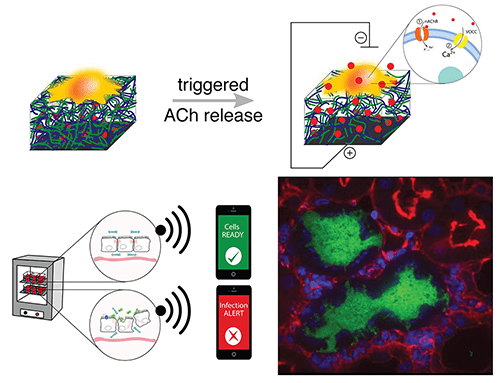Research focus
Richter-Dahlfors’ research group embraces scientists with expertise in microbiology/infection, neuroscience, and medicine as well as chemistry, organic- and microelectronics. Via extensive engagement in national and international multidisciplinary collaborations, we focus on defining the integrated pathophysiology of bacterial infections, and on generating novel technologies for neuromodulation.

Tissue microbiology reveals the integrated pathophysiology of infection
By applying a panel of intravital techniques (e.g. intravital 2-photon microscopy, amperometric biosensors), we study the real-time dynamics of the infection process within the organ at high resolution using uropathogenic E. coli-induced pyelonephritis as a model.
Our work
- aids in establishing the emerging field 'tissue microbiology'
- advances the development of biomimetic tools for complementary in vitro studies
- focuses on developing biosensors for hospital-acquired infections
- producing smart materials for use in the clinic
Organic bioelectronics in nanomedicine
We recently demonstrated the use of conducting polymers for precise, non-convective, electrophoretic delivery of signal substances, such as ions and neurotransmitters. Analogously to the function of neurons, the device mimics the action potential causing the release of chemical substances into the synaptic cleft. We currently focus on integrating this technology as a novel machine-to-brain interface and as an implantable neuromodulation technology.
